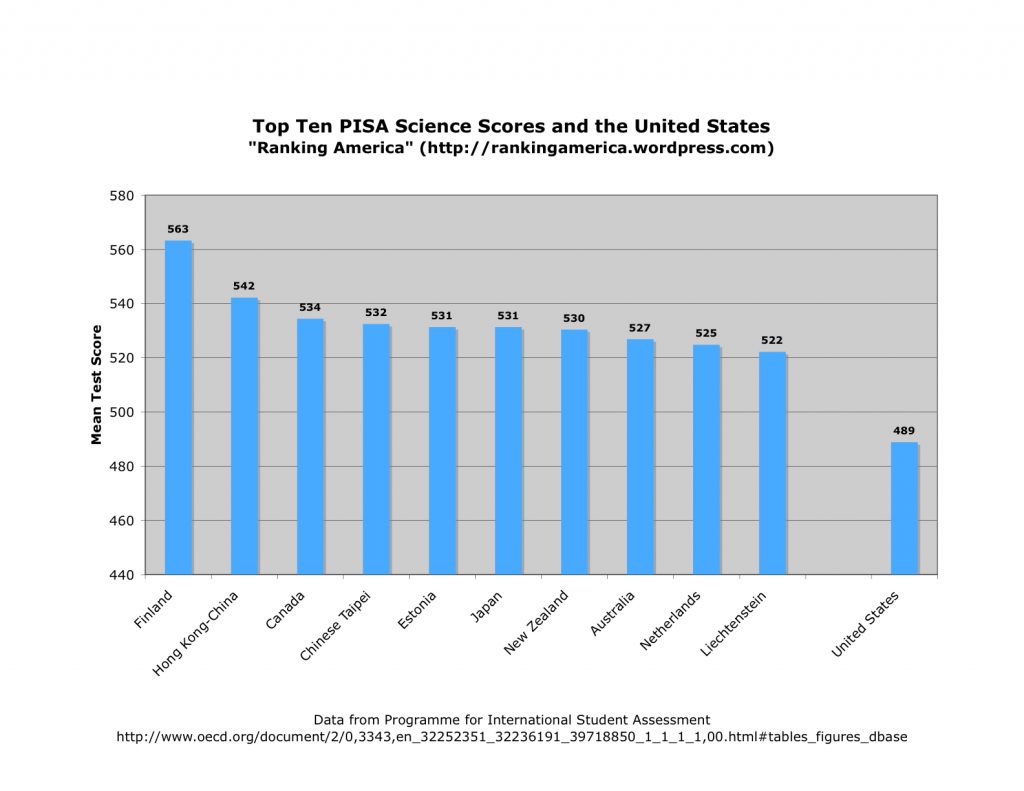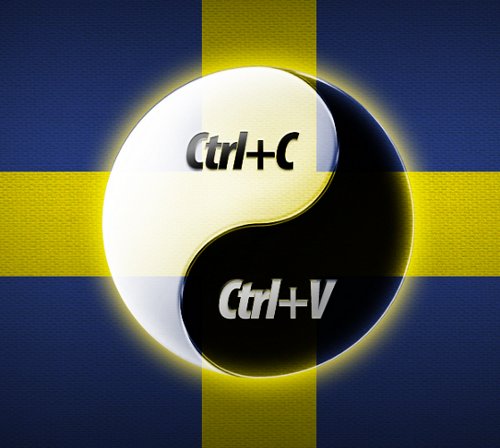Uncategorized
10 Aug Your child in year 2100. Forecasts from the world’s leading futurists.
 For a child born today, what will the world look like in 2100? This is the topic of a special section of The Futurist, September- October issue. Via scenarios and forecasts from some of the leading expert within foresight, we get a glimpse into what it will mean to be 88 at the dawn of the next century. This is the future of the Homeland generation. Millennials will be 96 to 120 if they are alive and some of them will. Some scenarios make me infer that some Generation X members are still with us as "post-centenarians". Others take the the transhumanist/singulitarian view that we have passed the point where we will be able to live forever.
The trends and emerging issues covered range from energy, climate changes, economic systems, space travel, scientific breakthroughs - particularly in biology and computing – and of course, aging.
Extreme longevity seems to show up in many of the narratives, reflecting long anticipated breakthroughs in medicine, computing and biotechnology. Resource depletion combined with resource scarcity, governmental issues and dwelling patterns are other issues.
The “mood” of these forecasts, or the level of pessimism vs. optimism, seems to be in line with most futurist projections: If and when we can manage to reform ourselves before we totally ruin the planet, it’s going to worse only until it gets better. Similar to cycle theories like the Kondratiev long waves or Strauss and Howe’s generational predictions, we will most likely go through a period of crisis - a period we have already entered - before we enter a new “high period”.
For a child born today, what will the world look like in 2100? This is the topic of a special section of The Futurist, September- October issue. Via scenarios and forecasts from some of the leading expert within foresight, we get a glimpse into what it will mean to be 88 at the dawn of the next century. This is the future of the Homeland generation. Millennials will be 96 to 120 if they are alive and some of them will. Some scenarios make me infer that some Generation X members are still with us as "post-centenarians". Others take the the transhumanist/singulitarian view that we have passed the point where we will be able to live forever.
The trends and emerging issues covered range from energy, climate changes, economic systems, space travel, scientific breakthroughs - particularly in biology and computing – and of course, aging.
Extreme longevity seems to show up in many of the narratives, reflecting long anticipated breakthroughs in medicine, computing and biotechnology. Resource depletion combined with resource scarcity, governmental issues and dwelling patterns are other issues.
The “mood” of these forecasts, or the level of pessimism vs. optimism, seems to be in line with most futurist projections: If and when we can manage to reform ourselves before we totally ruin the planet, it’s going to worse only until it gets better. Similar to cycle theories like the Kondratiev long waves or Strauss and Howe’s generational predictions, we will most likely go through a period of crisis - a period we have already entered - before we enter a new “high period”. Dr. William Halal and Laura B Huhn from TechCast believe a new high tech era will occur around 2020. This view is similar to that of Olli Hietanen and Marko Ahvenainen, Finland Futures Research Centre, who forecast a Sixth Kondratieff wave (2010 – 2050) based on new innovation and technologies within biotechnology. The Sixth wave differs from the Fifth because of the increasingly rising prices on raw materials and energy. The new paradigm in innovation and production is likely to be within molecular, or synthetic, biology, which will allow us to grow and change structures from raw biological materials. Just think about all the experiments happening with stem cells and organ scaffolding in the labs today! Not to mention biological 3-D printing. Tissue engineering will enable us to grow new organs and artificial meats, even biodegradable polymers to be used in manufacturing. These prospects might be frightening to some, conjuring up 19th and 20th century sci-fi dystopias like Frankenstein and Brave New World. But for most futurists, the unsustainable alternative of status quo is often much scarier!
Dr. William Halal and Laura B Huhn from TechCast believe a new high tech era will occur around 2020. This view is similar to that of Olli Hietanen and Marko Ahvenainen, Finland Futures Research Centre, who forecast a Sixth Kondratieff wave (2010 – 2050) based on new innovation and technologies within biotechnology. The Sixth wave differs from the Fifth because of the increasingly rising prices on raw materials and energy. The new paradigm in innovation and production is likely to be within molecular, or synthetic, biology, which will allow us to grow and change structures from raw biological materials. Just think about all the experiments happening with stem cells and organ scaffolding in the labs today! Not to mention biological 3-D printing. Tissue engineering will enable us to grow new organs and artificial meats, even biodegradable polymers to be used in manufacturing. These prospects might be frightening to some, conjuring up 19th and 20th century sci-fi dystopias like Frankenstein and Brave New World. But for most futurists, the unsustainable alternative of status quo is often much scarier!
30 Jul No, Goth is not a Millennial subculture! And they can probably sell you a bottle of milk.
[caption id="attachment_967" align="alignleft" width="237"] The conclusions you draw are based on your initial perception[/caption]
After I wrote piece on generational archetypes and their characteristics for a newspaper a few years ago I was surprised by the number of animated reactions I received in the online comment section. People don't like to be pigeonholed, even under my pretense of doing social science trend research. It turns out that when social scientists and market researchers use demographic, economic and cultural data to glean insight into contemporary trends they are stepping on psychological minefields. Readers often feel stigmatized by the findings and believe this way of classifying people is just an intellectualized form of bigotry.
I understand this hesitation, but I feel strongly that the goal of a social scientist is not to compartmentalize certain types of people to solidify unfounded myths, but quite the opposite. When social scientists make generalizations it’s always – or should always be - based on value neutrality and scientific observations. Moreover the goal is not to neglect human agency and individual differences, but to say something about the general trends.
The conclusions you draw are based on your initial perception[/caption]
After I wrote piece on generational archetypes and their characteristics for a newspaper a few years ago I was surprised by the number of animated reactions I received in the online comment section. People don't like to be pigeonholed, even under my pretense of doing social science trend research. It turns out that when social scientists and market researchers use demographic, economic and cultural data to glean insight into contemporary trends they are stepping on psychological minefields. Readers often feel stigmatized by the findings and believe this way of classifying people is just an intellectualized form of bigotry.
I understand this hesitation, but I feel strongly that the goal of a social scientist is not to compartmentalize certain types of people to solidify unfounded myths, but quite the opposite. When social scientists make generalizations it’s always – or should always be - based on value neutrality and scientific observations. Moreover the goal is not to neglect human agency and individual differences, but to say something about the general trends.
12 Jul Futurist Peter Diamandis on Our Abundant Future
This is one of the most appealing parts of being a futurist! Just when we find ourselves surrounded by statistics on scarcity and gloom, the wise visionaries in our field see mostly hope. And I love TED too. How else would I endure folding laundry...
04 Jul Choosing a future in the “real world”
[caption id="attachment_915" align="alignleft" width="262" caption="Source: Public Domain Images"] [/caption]
When I asked my 8-year old daughter the other day what she wants to be when she grows up she gave me a metacognitive answer I did not expect from somebody her age. "Mom, you know how children my age often dream of becoming popstars, but they know that it's probably never going to happen? Well, I'm one of those children who have those dreams. So in my dream I will become a popstar, but in the "real world" I'm going to be an engineer and find ways to get more clean fresh water for the world. Maybe by taking the salt out of the seawater".
Of course at age 8 few people really know what they want to do with their lives. I probably changed my mind at least thirty times growing up, and so do children today. Yet I feel that the signals they pick up from their environment today will have an impact on their future choosing. My own children and many of their friends have been learning about water conservation and the perils facing the global climate pretty much from they learned how to talk. Today teaching children about environmental protection in preschool and elementary school seems as important as teaching them basic manners and academic pre-skills. And that is not even mentioning the lessons you learn from the increasingly severe summer droughts in central Texas!
Yet if current trends continue by the time this generation reach college, the best and brightest minds might very well be sucked up by Wall Street firms and big
[/caption]
When I asked my 8-year old daughter the other day what she wants to be when she grows up she gave me a metacognitive answer I did not expect from somebody her age. "Mom, you know how children my age often dream of becoming popstars, but they know that it's probably never going to happen? Well, I'm one of those children who have those dreams. So in my dream I will become a popstar, but in the "real world" I'm going to be an engineer and find ways to get more clean fresh water for the world. Maybe by taking the salt out of the seawater".
Of course at age 8 few people really know what they want to do with their lives. I probably changed my mind at least thirty times growing up, and so do children today. Yet I feel that the signals they pick up from their environment today will have an impact on their future choosing. My own children and many of their friends have been learning about water conservation and the perils facing the global climate pretty much from they learned how to talk. Today teaching children about environmental protection in preschool and elementary school seems as important as teaching them basic manners and academic pre-skills. And that is not even mentioning the lessons you learn from the increasingly severe summer droughts in central Texas!
Yet if current trends continue by the time this generation reach college, the best and brightest minds might very well be sucked up by Wall Street firms and big
04 Jun The mommy wars – did modern mothering become a monastic servitude contest?
 Children who grow up in the typical fourth turning crisis era are extremely over-parented. The New Silent/ Homeland generation is no exception. I think there are various reasons for this trend and they are often driven by fear of the future. Parenting has become a market place for many conflicting theories and they all thrive on fear and insecurity. If parenting philosophies are our currencies, our children are the investment objects. And when it comes to our own flesh and blood, there is no such thing as second best.
In the early 2000s the attachment-parenting trend accompanied by the theories of Dr. Sears started to make encroachment into the American middle class. The philosophy of attachment parenting is based on attachment theory in psychology. Since infants become attached to adults who are sensitive and responsive in social interactions with them, a close relationship with parents, mostly the mother, has to be fostered to optimize the child’s socio-emotional development. This includes extended breastfeeding, co-sleeping and positive, non-confrontational forms
Children who grow up in the typical fourth turning crisis era are extremely over-parented. The New Silent/ Homeland generation is no exception. I think there are various reasons for this trend and they are often driven by fear of the future. Parenting has become a market place for many conflicting theories and they all thrive on fear and insecurity. If parenting philosophies are our currencies, our children are the investment objects. And when it comes to our own flesh and blood, there is no such thing as second best.
In the early 2000s the attachment-parenting trend accompanied by the theories of Dr. Sears started to make encroachment into the American middle class. The philosophy of attachment parenting is based on attachment theory in psychology. Since infants become attached to adults who are sensitive and responsive in social interactions with them, a close relationship with parents, mostly the mother, has to be fostered to optimize the child’s socio-emotional development. This includes extended breastfeeding, co-sleeping and positive, non-confrontational forms
27 Apr Tween marketing – it’s not your Mama’s old ads
Do you have a tween at home? A kid grown tired with your pre-packaged, PG rated stuff, yet who’s still too young to be allowed to choose products and entertainment for themselves? Well, guess what – they’re making their own choices and you’re not the only...
09 Apr Failing education or failing middle class?
 Compared to the countries we increasingly compete with in this globalized world, American educational test scores stink. Everybody knows it and everybody is getting busy looking for culprits and solutions. Which can only result in one thing: nobody can agree to what the cause is. We don’t challenge our kids enough! We challenge them too much! Teachers aren't held accountable enough! Teachers spend too much time with accountability standards, so student time suffers. We get frightfully wooed by ruthless Asian tiger mothers and we begrudgingly confess our kids are turning into lazy slobs because we don’t drill enough violin practice at an early age. And then we let out sighs of relief as soon as Finland becomes the country in vogue. Laid-back Finland, with their school kids loafing around their classrooms in slippers after entering school at the advance age of 7, all while making top PISA scores. And without even undergoing the rigor of standardized testings!
Compared to the countries we increasingly compete with in this globalized world, American educational test scores stink. Everybody knows it and everybody is getting busy looking for culprits and solutions. Which can only result in one thing: nobody can agree to what the cause is. We don’t challenge our kids enough! We challenge them too much! Teachers aren't held accountable enough! Teachers spend too much time with accountability standards, so student time suffers. We get frightfully wooed by ruthless Asian tiger mothers and we begrudgingly confess our kids are turning into lazy slobs because we don’t drill enough violin practice at an early age. And then we let out sighs of relief as soon as Finland becomes the country in vogue. Laid-back Finland, with their school kids loafing around their classrooms in slippers after entering school at the advance age of 7, all while making top PISA scores. And without even undergoing the rigor of standardized testings!
05 Apr Future-tinted eye wear: Project Glass
http://youtu.be/9c6W4CCU9M4 Although full Singularity may still be a while away, at least we have reasons to believe that augmented reality is finally getting nearer. The biggest optimists believe Project Glass will have Google Glasses available for use by the end of this year, while others display a...
29 Jan The War on Digital Content
 When the New Silents look back on the month of January 2012, they might recall a few contradictory events that had bearings on how they handle digital information. On January the 5th Sweden officially recognized Det Missionerande Kopimistsamfundet (the Missionary "Copy-me" society) by granting it religious status, which in essence sanctifies the act of file sharing. This
political gift to file sharers can only be seen as endowing moral righteousness to an activity that usually is viewed as immoral and illegal. Contrarily, on January 18th websites like Wikipedia, Google, Reddit, Mozilla and others blacked out their websites in protests of the anti-piracy bills SOPA and PIPA that were up for voting in the U.S.
Congress. Anti anti-piracy advocates argued the bills if enacted were flawed and would go far beyond preventing illegal file sharing, but in reality open the floodgates for internet censorship. After 4 million petition signatures and 250,000 messages to Congress, several legislators changed their minds and killed the bills. For now anyway. Yet the very next day FBI
When the New Silents look back on the month of January 2012, they might recall a few contradictory events that had bearings on how they handle digital information. On January the 5th Sweden officially recognized Det Missionerande Kopimistsamfundet (the Missionary "Copy-me" society) by granting it religious status, which in essence sanctifies the act of file sharing. This
political gift to file sharers can only be seen as endowing moral righteousness to an activity that usually is viewed as immoral and illegal. Contrarily, on January 18th websites like Wikipedia, Google, Reddit, Mozilla and others blacked out their websites in protests of the anti-piracy bills SOPA and PIPA that were up for voting in the U.S.
Congress. Anti anti-piracy advocates argued the bills if enacted were flawed and would go far beyond preventing illegal file sharing, but in reality open the floodgates for internet censorship. After 4 million petition signatures and 250,000 messages to Congress, several legislators changed their minds and killed the bills. For now anyway. Yet the very next day FBI

